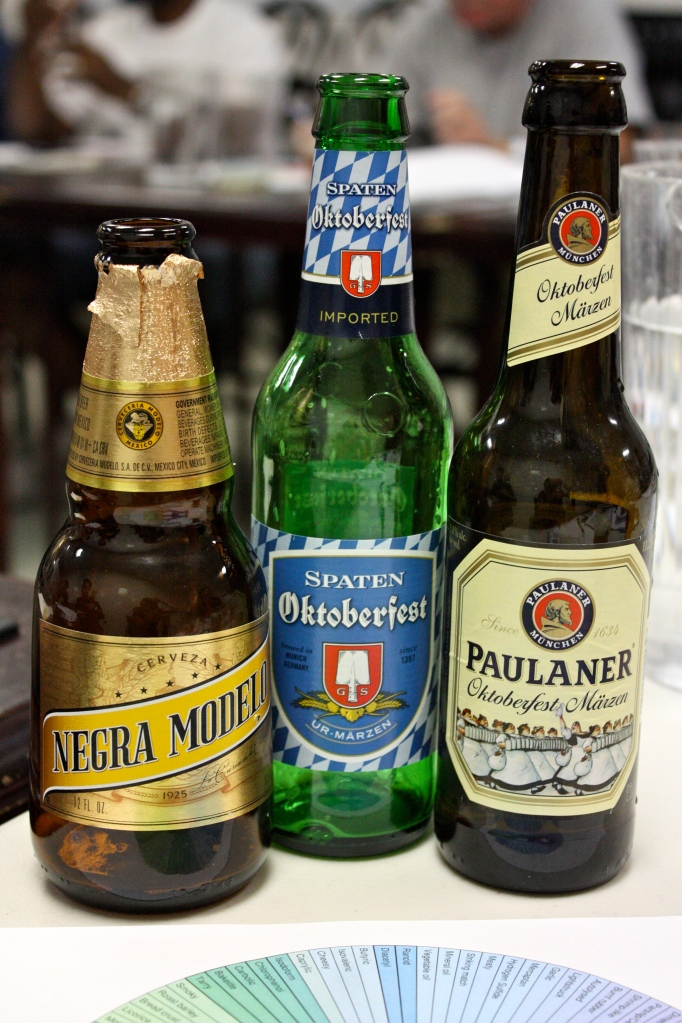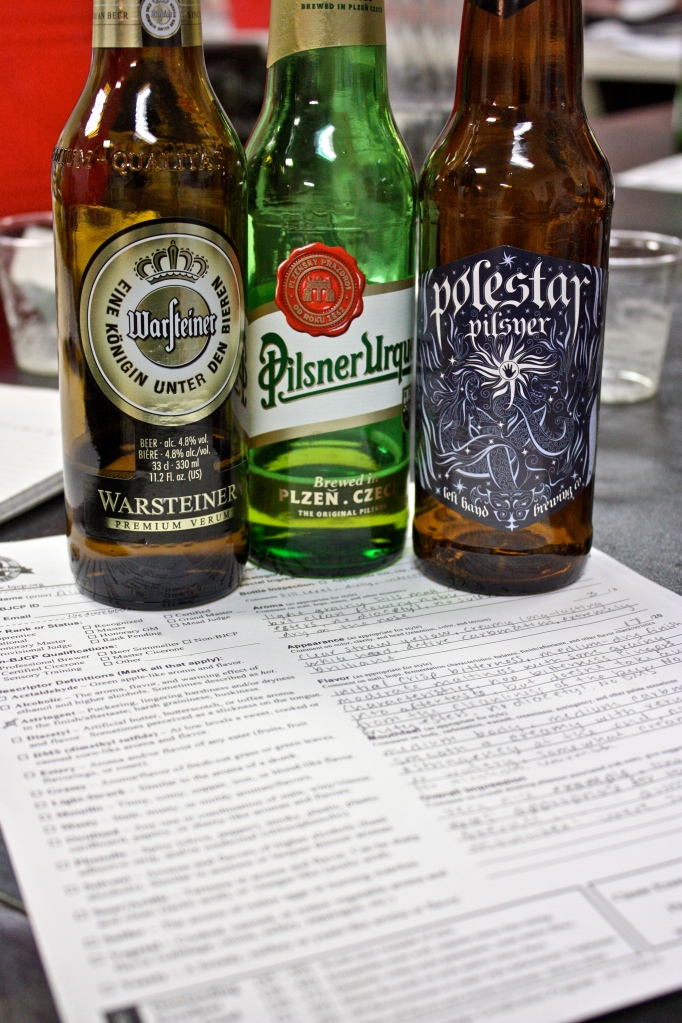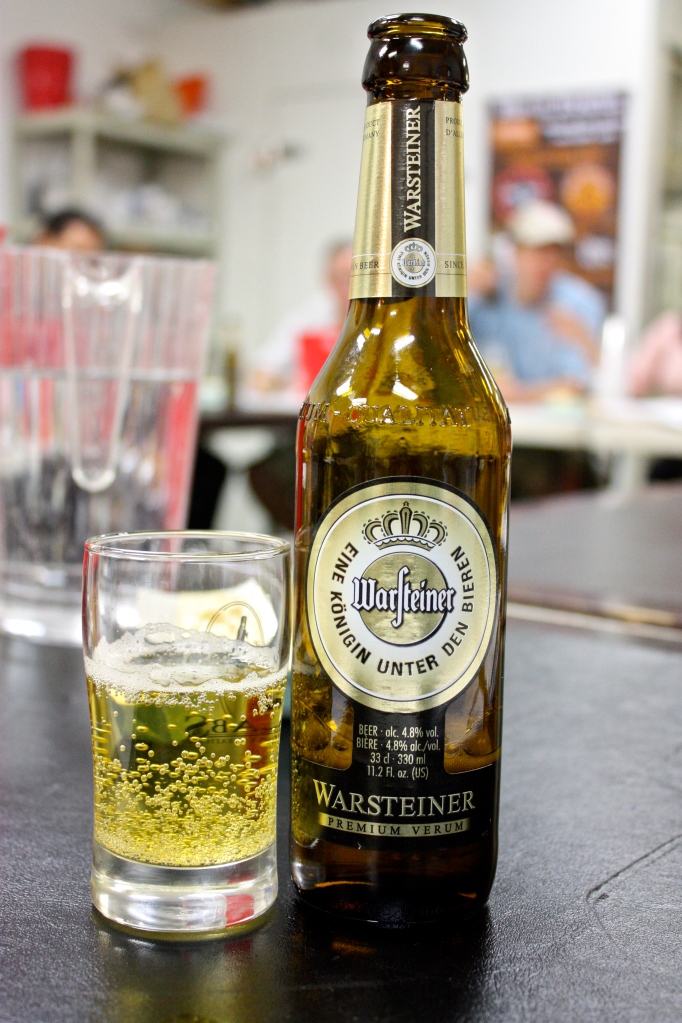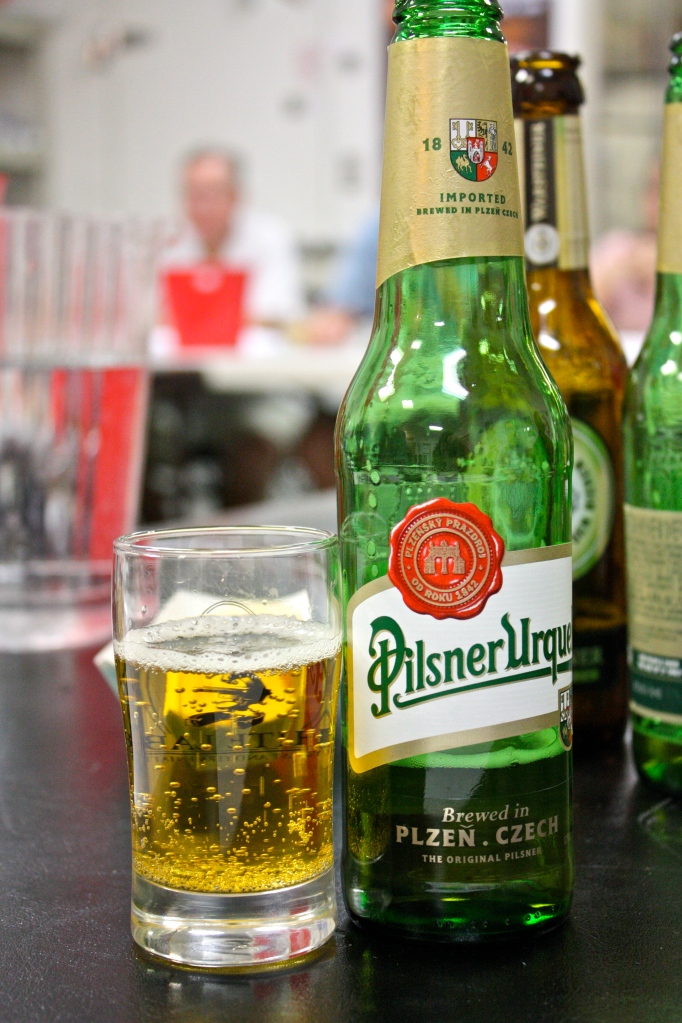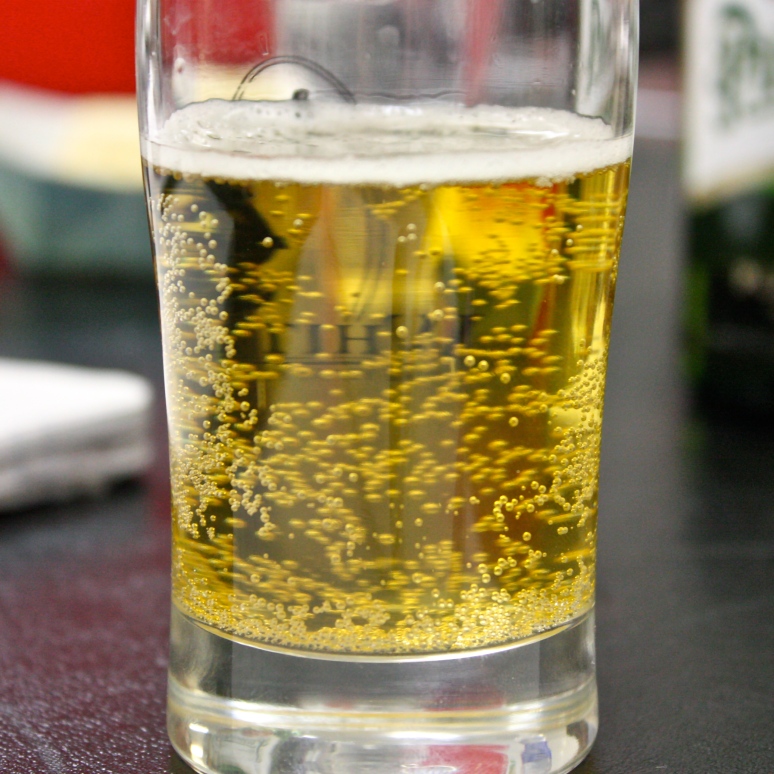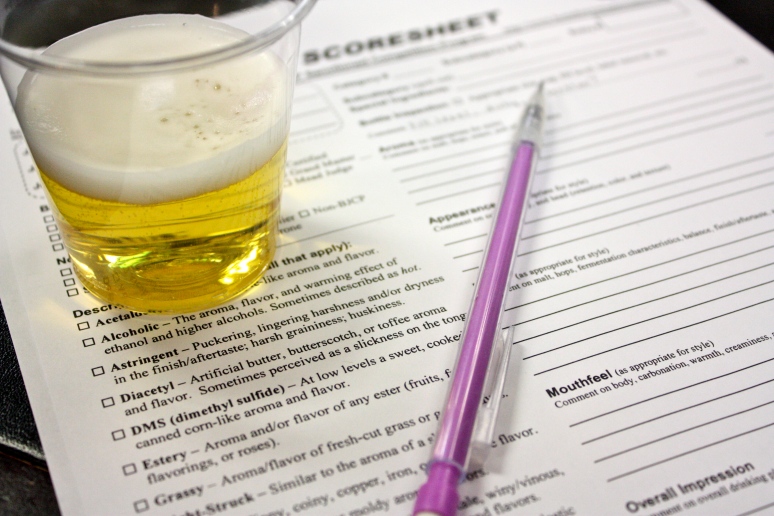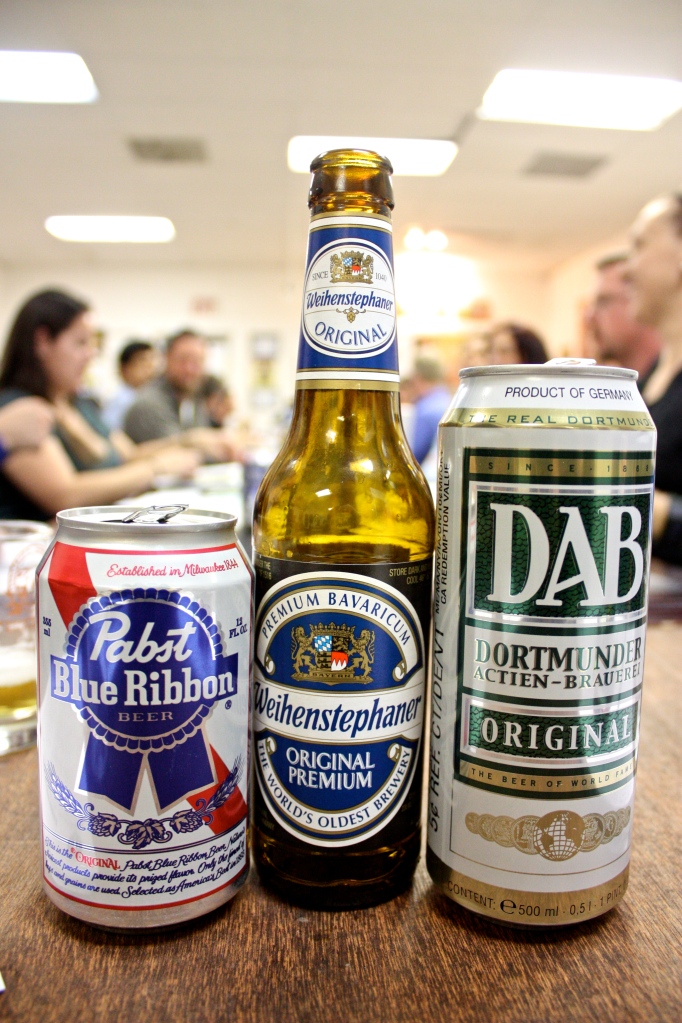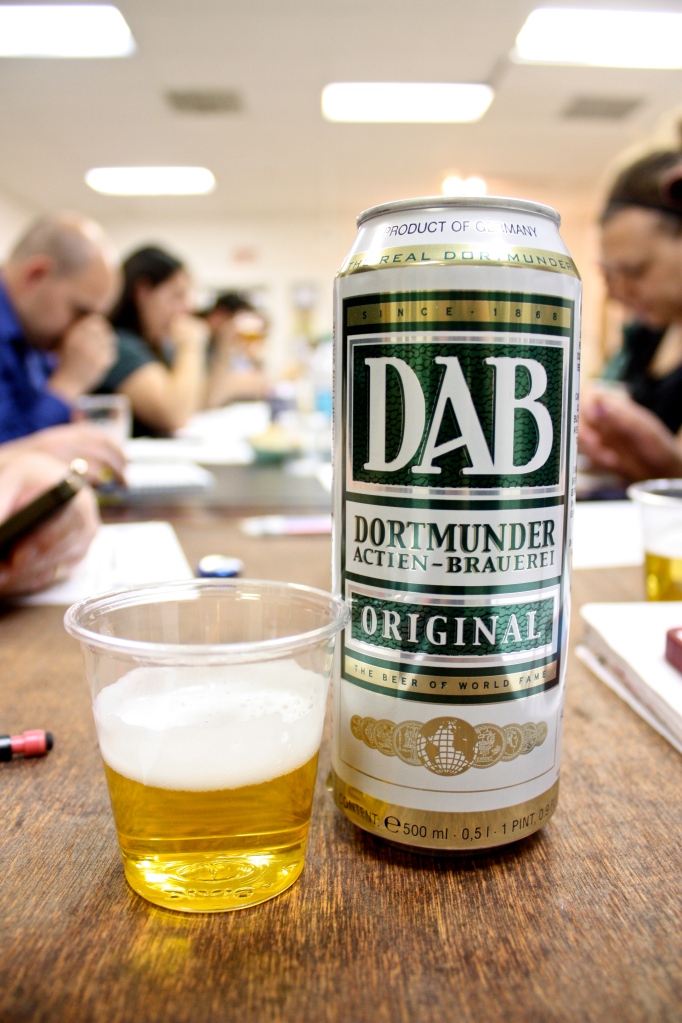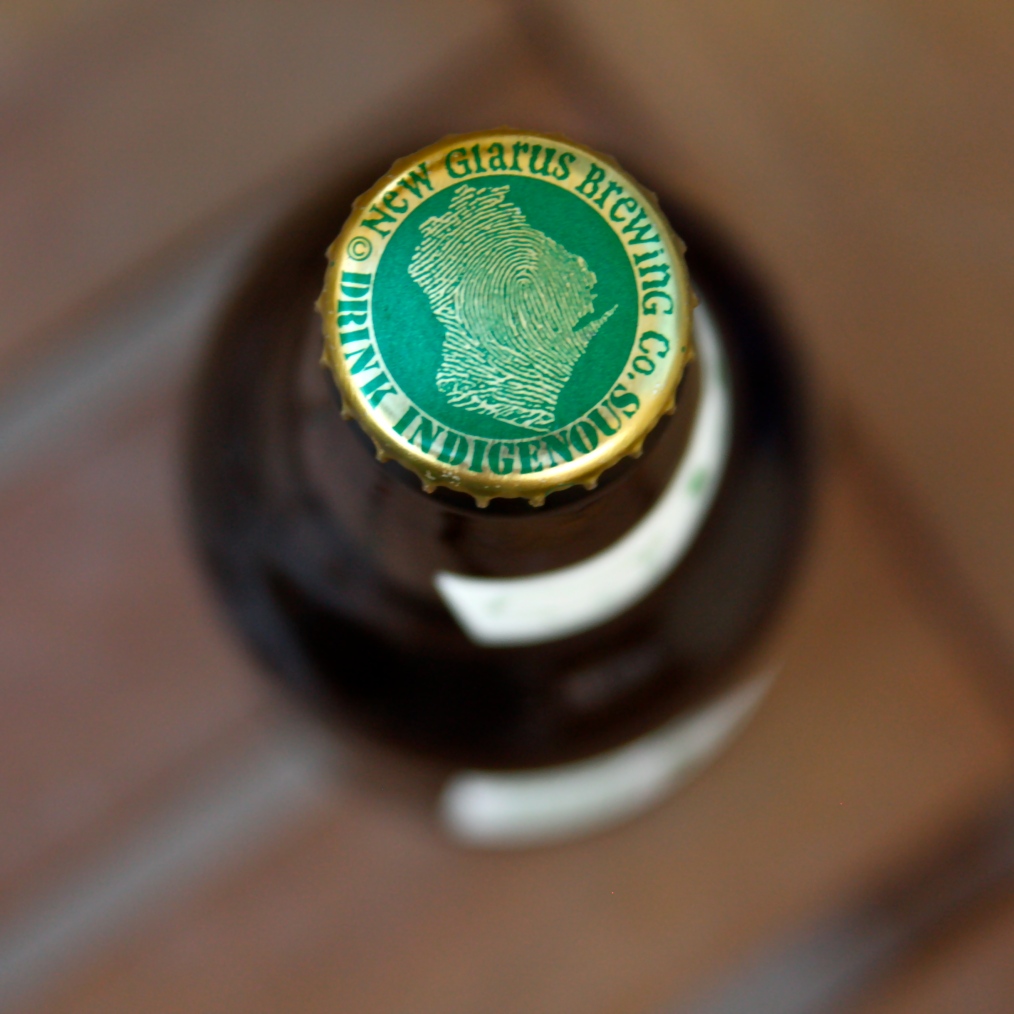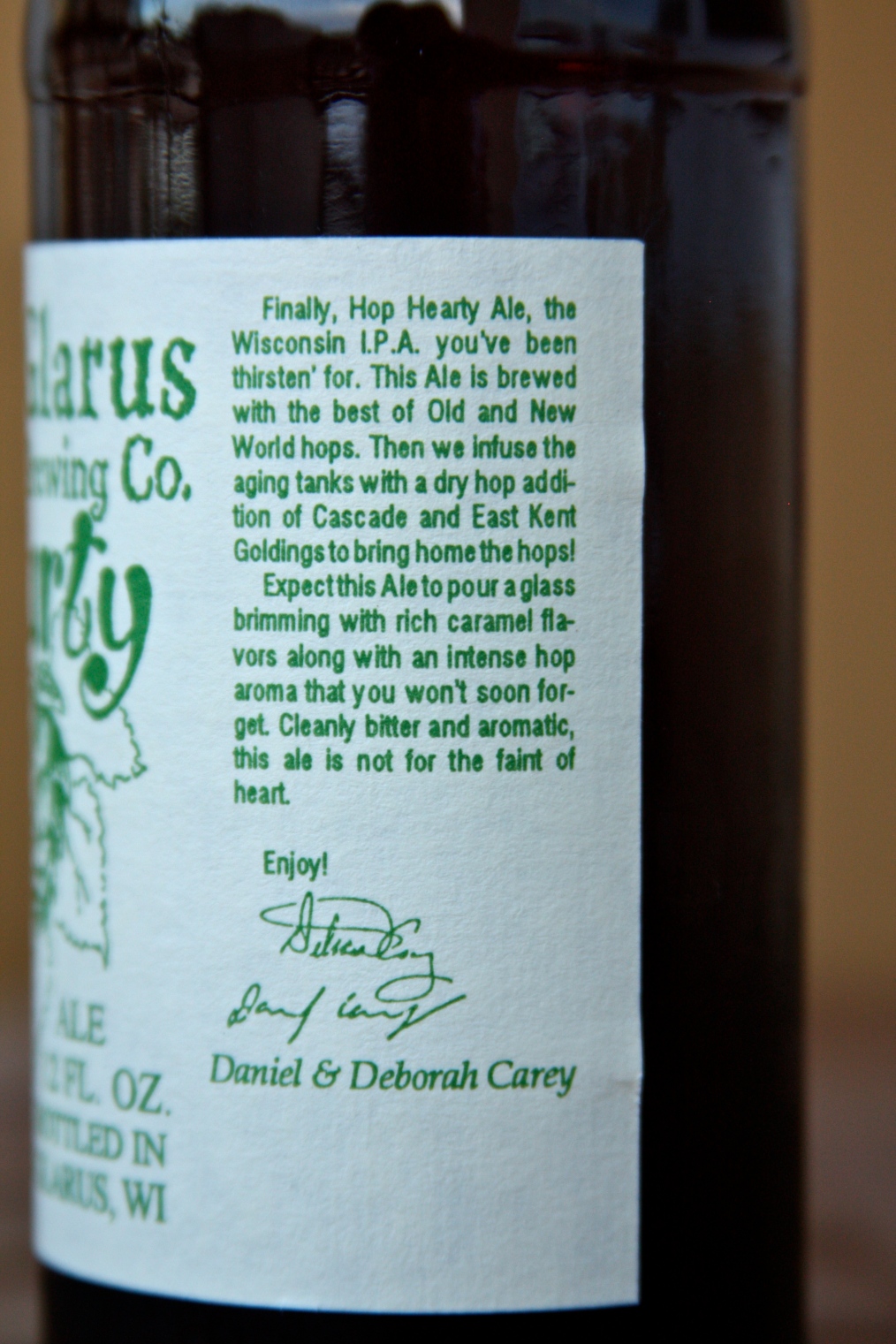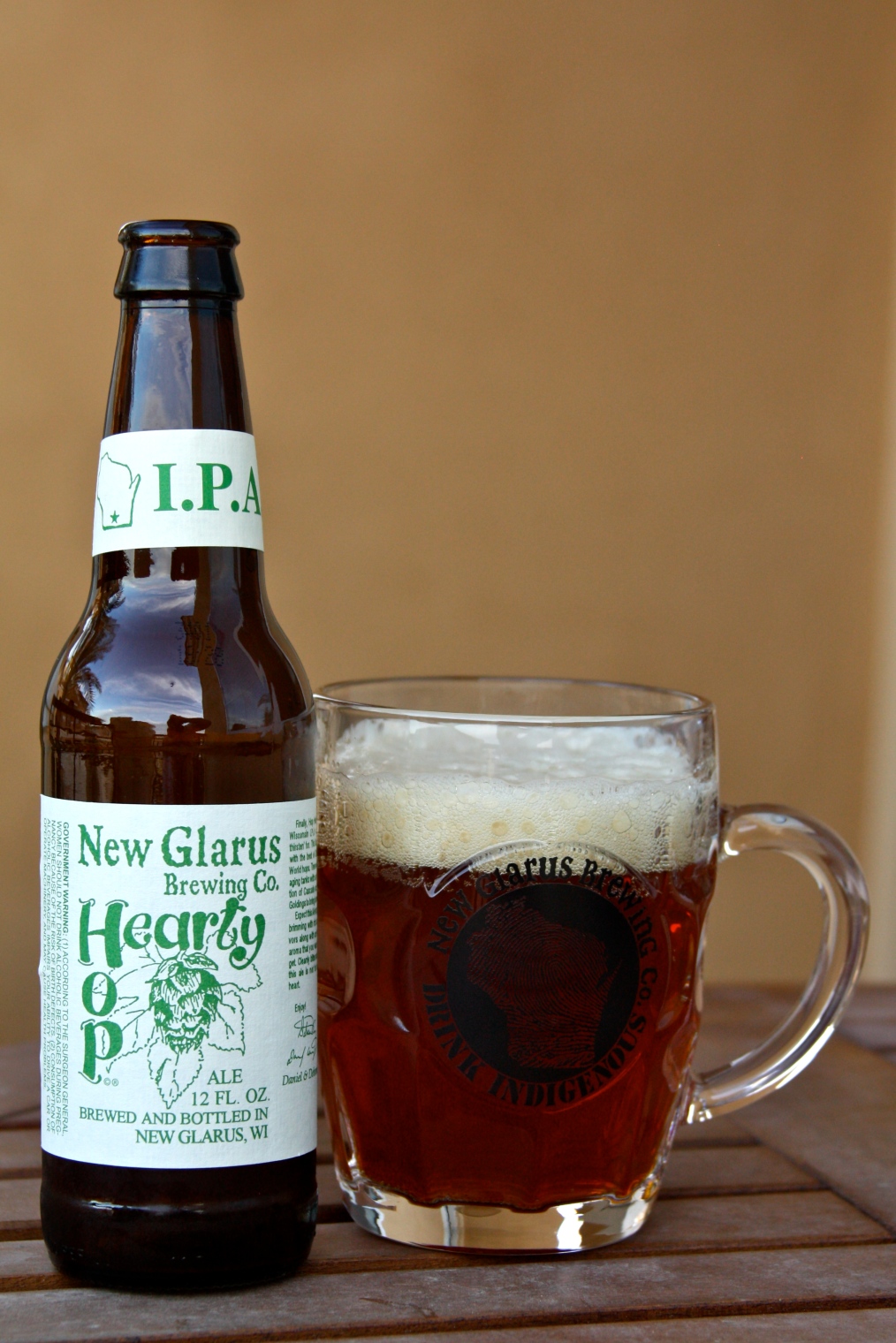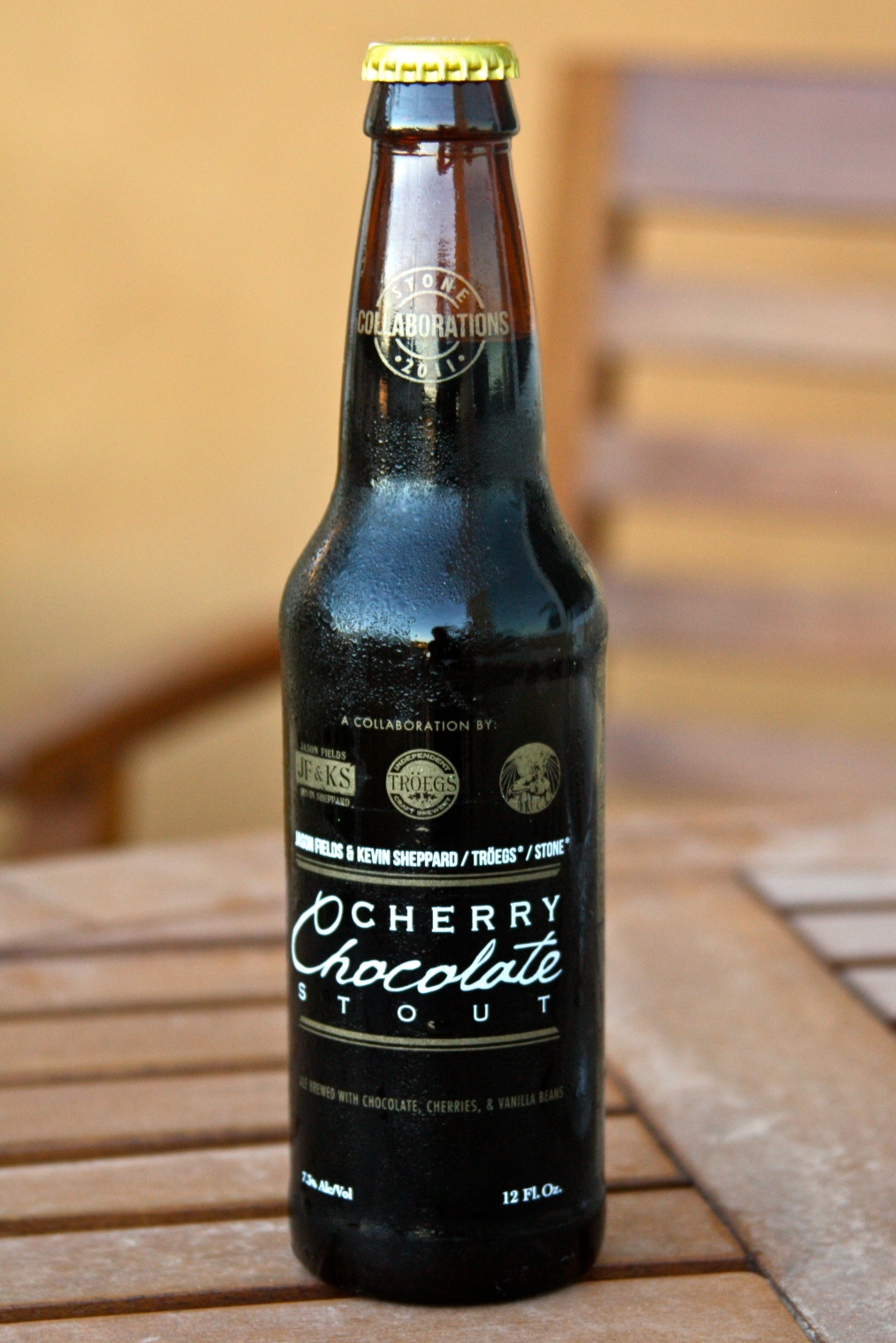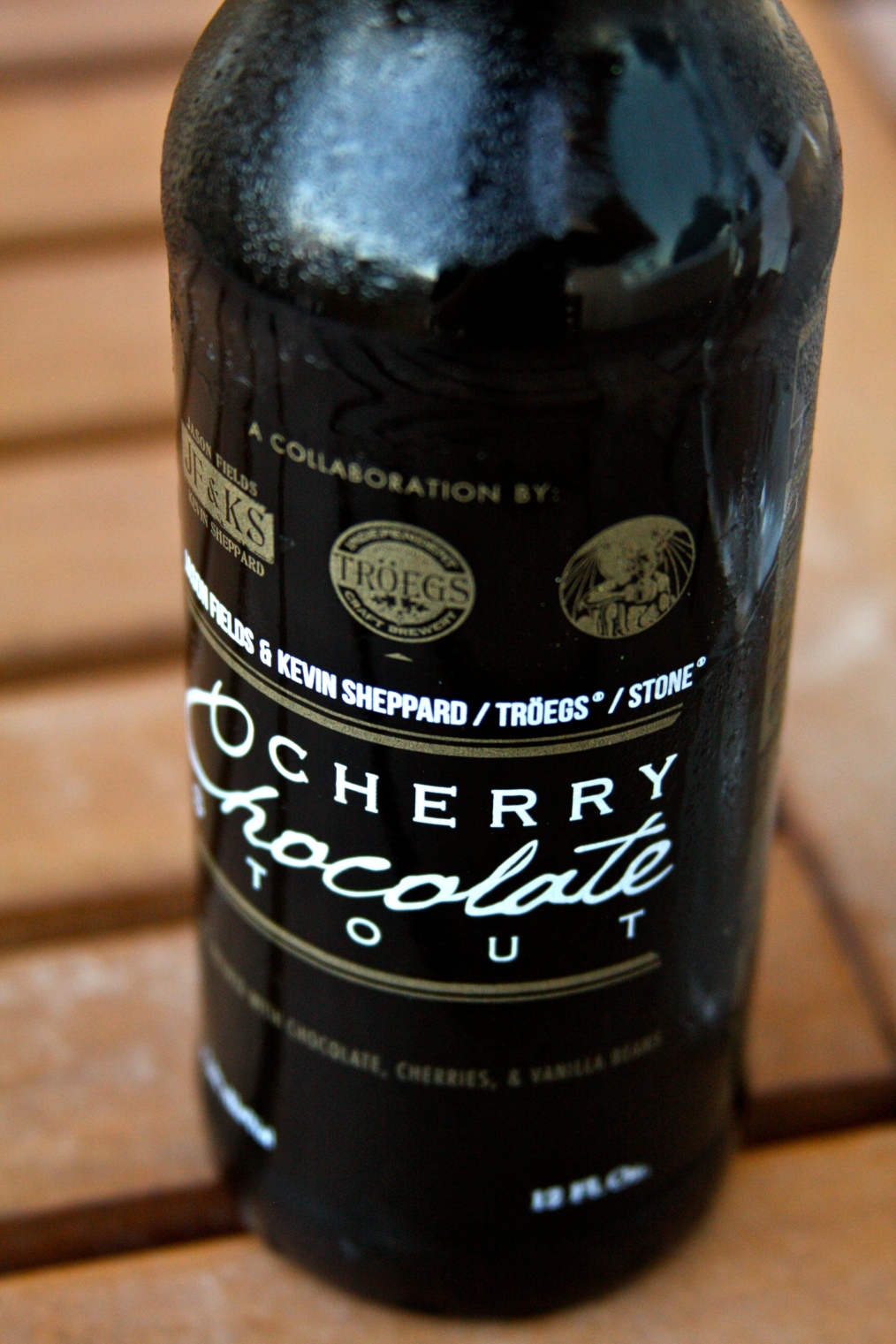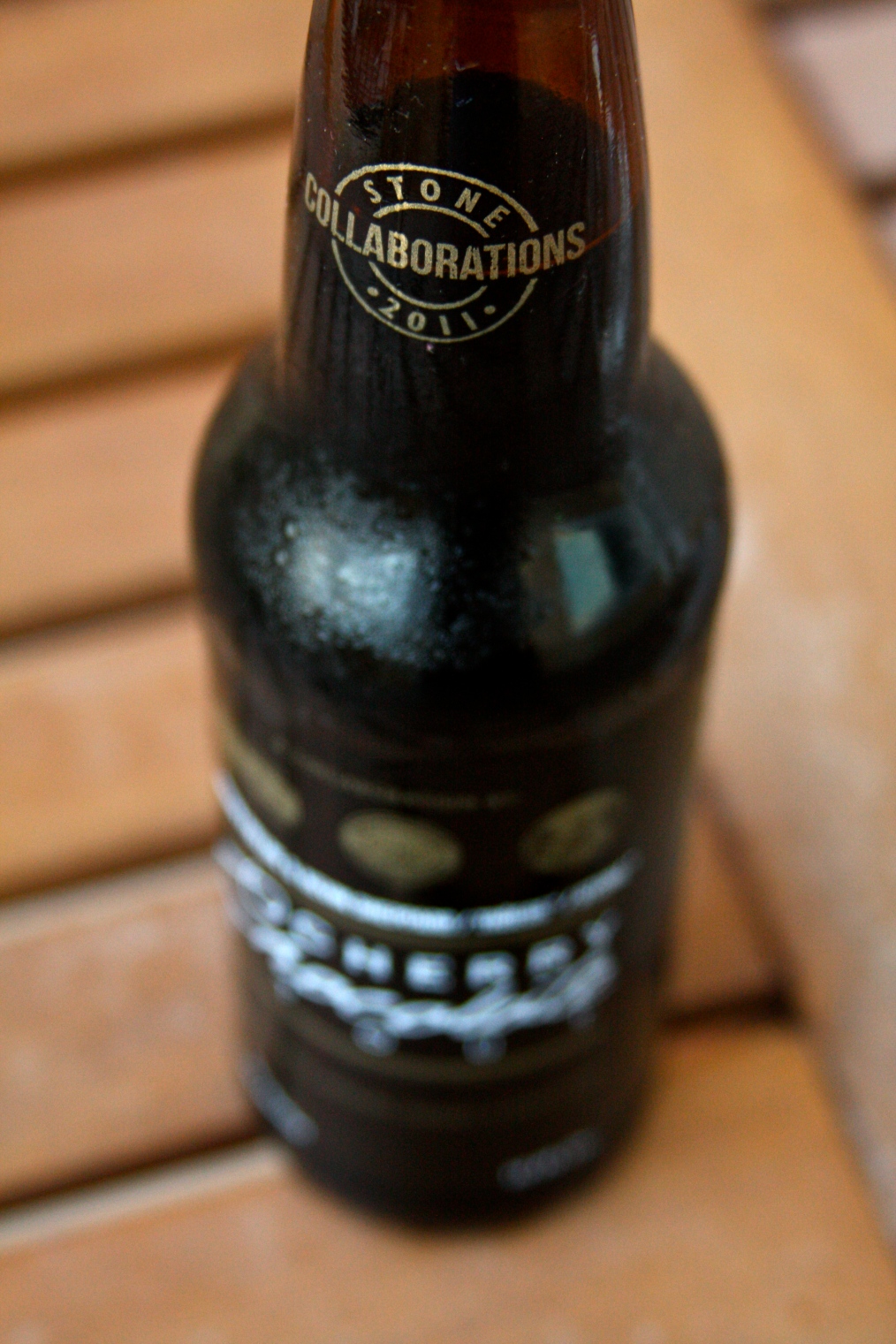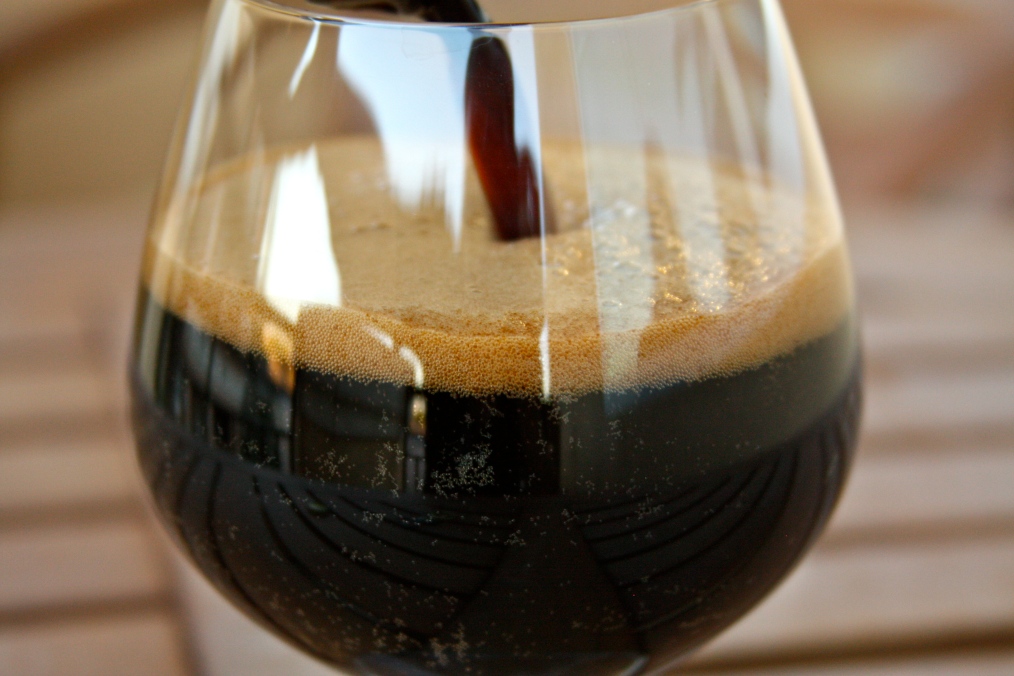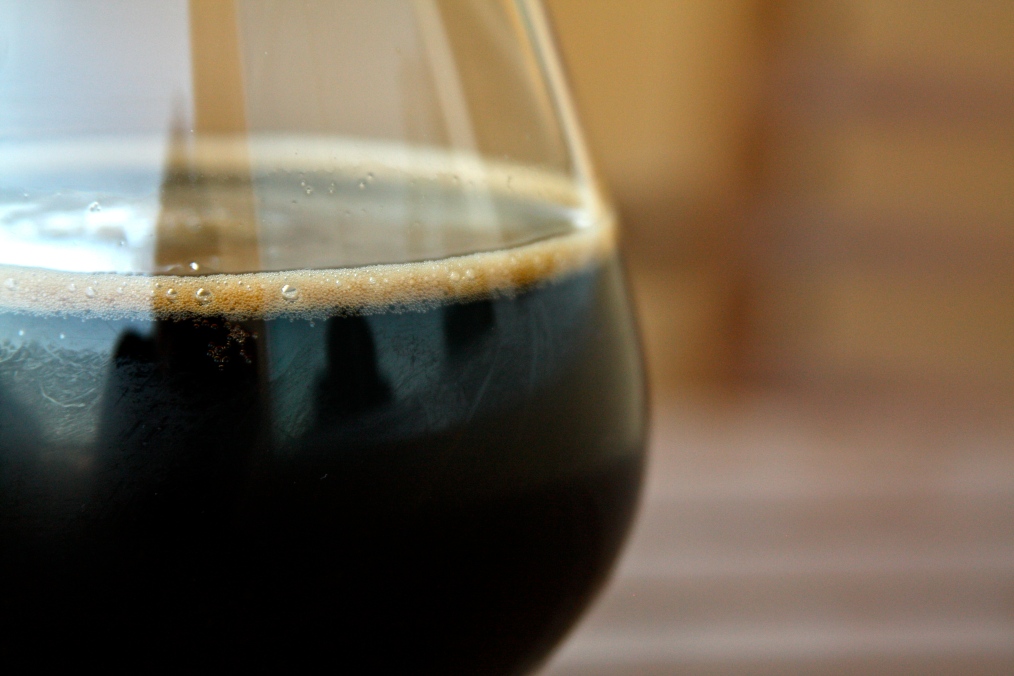BJCP Class #3 – Sensory Vocabulary & Style 3: European Amber Lager
Not even week 3 and I’ve already fallen behind. Work events are starting to come in waves, and I’ve been attending beer dinners, festivals, and promos like crazy. Not to mention, I spent all day Saturday volunteering behind the scenes at a beer judging that went about as smoothly as a ship in a hurricane. Nevertheless, I’m going to speed through this one so I can at least get it out there and not have to worry about catching up twice over since I have my 5th class tonight!
At the beginning of class, we were given multiple sheets with appropriate descriptors for each of the judging categories, different aspect examples for aroma, appearance, flavor, mouthfeel, and overall impression, and a flavor/aroma wheel in order to learn which words might best describe what it is we’re experiencing in a particular beer. For example, if you perceive a beer to smell or taste fruity, you need to figure out which fruit it reminds you of (especially if it’s not supposed to have any fruit in it). Your most common choices are acetaldehyde (green apple), apple, pear, citrus, strawberry, melons, banana, etc. More uncommon choices are black currant, raspberry, peach, and mango. You might want to describe whichever fruit you’re experiencing as perfumy, sour, cloying, or even syrupy. Some other common categories to pull descriptors from include: vegetal (woody, piney, nutty – walnut, almond, etc – coconut, fresh grass), cereal (straw, corn, mealy, malty), maillard (licorice, smoky), sulfury (meaty, vegetable oil, garlic, lightstruck, cooked cabbage/sweet corn/tomato), or stale (papery, leathery, earthy, musty). There is really no limit to what descriptors you can use, and if the beer you’re judging reminds you of something from your childhood, write it down! No beer will be judged by the exact same personal criteria, and what you might perceive as bacon, someone else might be perceive as the smell of the plastic swing set they grew up playing on when it sat in the sun for too long.
While flavor and aroma are fairly free in the rules department, there are specific color guidelines that should be referenced when judging appearance. The head can be a little more difficult, since it really depends on your pour (tip: pour vigorously to ensure a strong starting head that will allow you time to look it over as it dissipates). Appropriate color descriptions vary across 12 SRM valuations ranging from 2 to 40+ and are grouped together based on what is acceptable for each style. Options include straw, yellow, gold, amber, deep amber/light copper, copper, deep copper/light brown, brown, dark and very dark brown, black, and opaque. For judging, there are special additives that may be mixed in a lighter beer to make it appear darker to throw you off (as well as added legitimately during the brewing process to better fit a beer into the style), but I’ll cover that next time.
Then there’s mouthfeel, which is commonly mistaken with flavor and occasionally the two become interchangeable for some people. What you feel on your tongue and throughout your mouth is NOT what you are tasting. If something is sour, it is a flavor. If something is astringent or puckering or cloying, it is mouthfeel. What you physically feel when your taste buds recognize something sour is mouthfeel. For me, the biggest issue I have is that some of the words you can use for mouthfeel are also acceptable as descriptors for flavor (something can be cloyingly sweet). Just make sure you remember to include adjectives you’re not sure about in both areas on a scoresheet. Also of note, carbonation is not a flavor…it is a mouthfeel.
I’ll save flaws for another week, since they can apply to any beer.
Style 3A – Vienna Lager. For the example, we sampled Negra Modelo. My notes:
- Aroma – Spicy from hops, toasted malts, faint fruitiness (possibly apple or pear)
- Appearance – deep amber to light copper, off-white head, bright clarity
- Flavor – malty sweetness, not as dry as a pilsner, but still soft and clean. Balanced finish with no overpowering hops or malt. No caramel flavors, minimal toasted flavors
- Mouthfeel – medium-light body, gentle creaminess, moderate carbonation, smooth
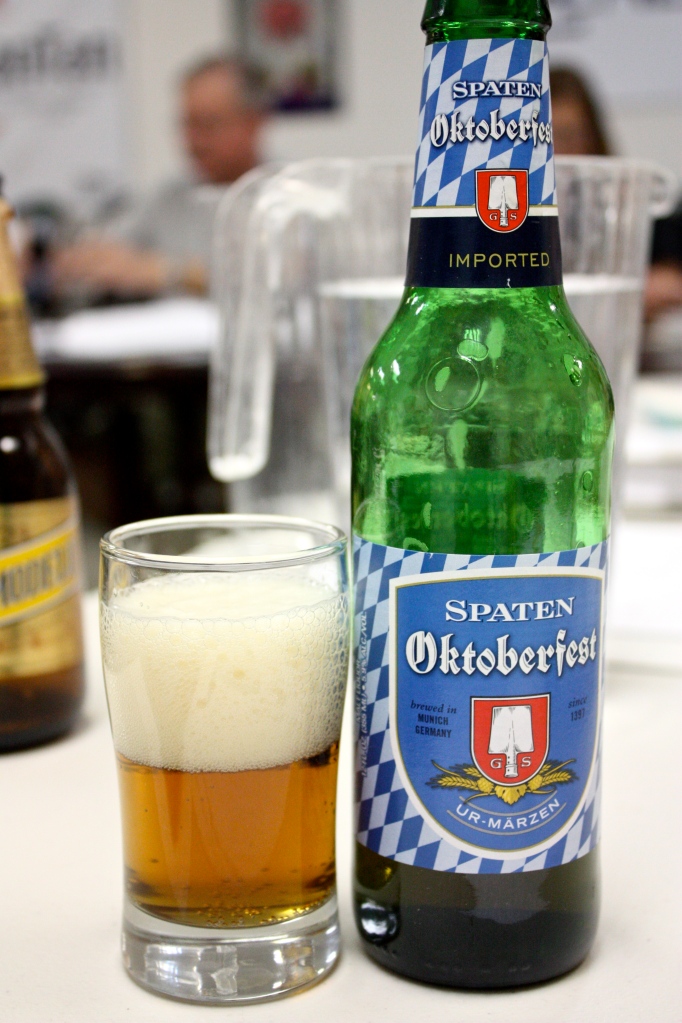 Style 3B – Oktoberfest/Märzen. For the example, we sampled Spaten Oktoberfest. (Oktoberfests are generally higher in ABV, darker, sweeter, and lower in hop profile than Viennas) My notes:
Style 3B – Oktoberfest/Märzen. For the example, we sampled Spaten Oktoberfest. (Oktoberfests are generally higher in ABV, darker, sweeter, and lower in hop profile than Viennas) My notes:
- Aroma – rich, sweet, toasty malt, no hops, no fruitiness, no caramel. Clean lager aroma
- Appearance – deep amber with gold highlights, bright clarity, solid off-white head
- Flavor – much more hop bitterness from the beginning, light carbonation, cardboard ending, a lot of malt
- Mouthfeel – light-medium (and apparently I didn’t think much more about it, because that’s all I wrote)
 Style 3B (part 2) – Oktoberfest/Märzen. For the example, we sampled Paulaner Oktoberfest Märzen. (We were told that Märzens were traditionally brewed in March in order to be enjoyed in the fall) My notes:
Style 3B (part 2) – Oktoberfest/Märzen. For the example, we sampled Paulaner Oktoberfest Märzen. (We were told that Märzens were traditionally brewed in March in order to be enjoyed in the fall) My notes:
- Aroma – bready, biscuity maltiness, no hop aroma, no fruity esters, completely appropriate for style
- Appearance – gold-amber color, bright clarity, white head with a little bit of lacing
- Flavor – bitter aftertaste, moderate malty sweetness, bready and lightly toasty. No esters, minimal to no hop flavor, but spiciness is present
- Mouthfeel – medium carbonation, medium body with slight creaminess
Share:
BJCP Class #2 – A Proper Scoresheet & Style 2: Pilsner
If I thought I felt overwhelmed after the first class, I now have the feeling that it’s only going to get exponentially more overwhelming before it starts becoming more approachable. I really appreciate that the class offers both a technical topic as well as a focus on each individual beer style in order, but just knowing that there’s going to be even more information to deluge my goldfish memory (beer probably doesn’t help this…), is actually frightening. I’m filling almost 90% of the time in my day right now, whether it’s working, preparing myself for the day, going jogging (more on this later, because it’s important to me right now), scheduling house tours, or scrounging for food. I somehow managed to royally screw up my daily schedule by staying out until 2am this past weekend (YOLO?), and getting myself back on track has been hellish, to say the least. So Sunday is going to be my reboot. I’m going to wake up at 6am whether I like it or not – and I won’t – and I’m going to rearrange my timeline for the day and hope it sticks throughout the week.
Remember when I was complaining about how I have no time to do anything fun for myself? Or clean my house? Well, priorities are priorities, and I’ll probably be reassigning them forever, but for now I have beer education, work, and exercise. And eating, but that’s been knocked down the list in the interest of health. I’m still eating, just practicing more portion control. Ok, this is boring, but I have been inspired to go jogging thanks to my super healthy husband (you’ll never take my chicken and pancetta!!), and for the last three days, I’ve managed to hold my own with a 5 mile track along one of the canals here in Arizona. I shoot for 1 hour and right now I’m managing a solid 13-minute mile. Honestly, I could care less about how fast I get done with the 5 miles, I just need to say I really enjoy being outside for the hour before sunset and that I feel like I can justify my lifestyle better as I get my health back. My goal is 150 miles in a month, so I can’t really skip a day, but I like a challenge. Hence why I’m diving headfirst with my eyes closed (I’m only peeking a little) into this BJCP education.
So as not to stray too far from the general theme of this little blog, class #2 was full of Pilsners! We actually sampled a few brews that I couldn’t photograph the logos of because they were in growlers, but you’re on a computer, I don’t need to tell you what to do.
Style 2A – German Pilsner (Pils). For the example, we sampled Warsteiner Premium Verum. My notes:
- Aroma – some sulfur, faint graininess, sweet Pils malt, spicy floral noble hops, fairly clean and crisp
- Appearance – Straw yellow, very pale and brilliantly clear, persistent white head
- Flavor – crisp, dry finish, moderate maltiness, slightly grainy, clean
- Mouthfeel – medium-light body, medium-high carbonation with a bit of a carbonic bite
Style 2B – Bohemian Pilsener. For the example, we sampled Pilsner Urquell. Quick fact: Pilsner Urquell was the original pilsner, having been brewed since 1842 in Bohemia (great article here).
- Aroma – rich, complex malt, faint doughy/biscuity sweetness, light buttery notes (diacetyl)
- Appearance – brilliant yellow/pale gold, dense creamy head
- Flavor – rounded bitterness and spizy saaz flavor amongst complex malts, though bitterness doesn’t linger, balanced malt and hop aftertaste
- Mouthfeel – medium bodied, medium carbonation, minimal to no affect from initial diacetyl detection
Style 2C – Classic American Pilsner. For the example, we sampled New Belgium Blue Paddle. Apparently there are no classic examples in the “Classic” American Pilsner category, but we were given Blue Paddle as an option for review. And learning. Also, many lighter beers can be brewed with adjucts (unless Reinheitsgebot is in effect). Corn gives beer a distinct grainy sweetness, and rice creates a crisper, more neutral character.
- Aroma – light grainy sweetness with very faint maltiness, moderate hop aroma, no diacetyl, somewhat fruity
- Appearance – clear yellow, light gold, bright clarity
- Flavor – moderate maltiness with little intensity (due to adjuncts), clean, medium bitterness, no coarse or harsh aftertaste
- Mouthfeel – medium body, rich creamy mouthfeel, medium carbonation
We also learned more about filling out a scoresheet and were given good examples (completely filled out, using the adjectives along the side to note what is and is not present, descriptive ability, reasons for score, etc) and bad examples (blank spaces, few words, no details given, no suggestions, etc). We were given a beer to judge that we all thought was another homebrew, like last time, but which turned out to be Left Hand’s Polestar Pilsner. I did a much better job filling out the scoresheet this time around, though I did need to reference the BJCP app a few times, and I conferred with some of my neighbors. Not knowing what I was judging, as is the norm in all judging situations, here are the notes I took and the score I gave for Polestar:
- Aroma – light grainy pils malt character, faint but clean flowery noble hops, no fruity esters, no diacetyl, no sulfur, crisp and dry on the nose (9/12)
- Appearance – clear straw yellow, creamy long-lasting white head, active carbonation, brilliant clarity (3/3)
- Flavor – initial crisp bitterness, medium-dry finish, moderate maltiness with some grainy characteristics, hop bitterness lingers into aftertaste, but doesn’t take away from the cleanliness of the beer, no fruity esters, no diacetyl, no DMS (17/20)
- Mouthfeel – medium body, medium carbonation, smooth and creamy with very light astringency at the end, not slick or watery, somewhat creamy as it warms, no alcohol heat (4/5)
- Overall Impressions – very nice example, lingering hop bitterness was appropriate for style, pleasant overall, aroma, appearance, and mouthfeel were satisfying (8/10)
- Total Score – 41/50
Once we discussed everyone’s scores in class, we were handed a sheet with scores that it was given by master judges from the Zymurgy publication. I’m happy to report that I managed to fit my score of 41/50 snugly between a few 43/50s and a 40/50. Being that judging is so temperamental depending on everyone’s individual palates, and that the goal is to score a beer within 7 points of the average score, I’m on a good track right now.
Share:
BJCP Class #1 – Basics of Judging & Style 1: Light Lager
Alright, so I’m terrible at this “keeping a dedicated writing schedule” thing, but now I finally have a dedicated subject to write about that IS on a dedicated schedule that I plan to keep (mostly because I’ve already paid 4 weeks in advance…) because it’s a topic that I’ve been meaning to explore and become better acquainted with. Thanks to the amazingness that is my local homebrew club, I’m currently “enrolled” in my first ever “formal” beer education! The Arizona Society of Homebrewers is hosting BJCP classes in preparation for the test to become a BJCP certified judge, and it is being led by current BJCP members who are active within the club. There are a lot of reasons to hate the state of Arizona, but the local beer scene is definitely not one of them!
The first class was a quick introduction to the art of judging, how to fill out a beer scoresheet, common phrases and words that are used, learning the difference between mouthfeel and flavor, and how to give improvements in the overall impression. I haven’t taken notes or studied since I’ve been in school…and it’s been a while, so this is going to require some actual work on my part, which I’m excited about, but also a little overwhelmed by. Right now with work, I’m swamped. It’s beer dinner season, everyone wants to do promotional pairings and tastings, there are multiple festivals every weekend, and I still have to do my actual job – which is driving hundreds of miles a week to make sure everyone is happy and the beer is fresh. Add to that my commitments with leading AZ Girls’ Pint Out, participating with other local beer groups, and trying to avoid eye contact with my increasingly disheveled house (as I look for a new one). Beer is definitely time-consuming, and I can’t really remember a time when my life wasn’t consumed by beer (oh wait, that was 3 years ago…) AS I’ve been consuming beer. It feels full, but rewarding – like a good beer?
And if you’re looking for a good beer that is both filling and rewarding, you should probably stay away from Style 1. Unless you plan on drinking a lot of it. Can I just preface this whole educational half of the post by saying that the 3 beers we sampled for Style 1 are 3 beers I have never checked into Untappd? I’m officially a snob. Unless I’m shitfaced or high – and both of these are highly unlikely at this point in my life – it is doubtful that I will drink any light lagers willingly. I’ve just sipped on water even when they were offered to me for free in the past. Alas, with judging comes, ironically, keeping an open mind and being able to recognize the style. So I’m retiring my “get the hell outta Dodge, macros!” pants and pulling out my “everyone’s welcome! Yes, even you, macros…” shorts (it’s hot here).
To the point, we united 1A: Lite American Lager, 1B: Standard American Lager, and 1C: Premium American Lager together as just “American Lager.” For the example, we sampled Pabst Blue Ribbon. I’m still not positive which category it falls into, as they’re all fairly similar, but I’d guess 1B. My notes:
- Aroma – sweet, corn, grainy, green apple (estery), no hops
- Appearance – bright straw yellow, clear, white frothy head with little persistence
- Flavor – sweet, corn, no hops, crisp
- Mouthfeel – thin, light, slight carbonic bite
Style 1D – Munich Helles. For the example, we sampled Weihenstephaner Original. We were told that it would be wise to learn the difference between Munich Helles, Dortmunder, and Schwarzbier…so if anyone wants to help out with my homework, let me know. My notes:
- Aroma – grainy sweet, minimal hops
- Appearance – pale gold, clear, creamy white head
- Flavor – grainy sweetness, malty palate (from what I’m told are Pils malts), minimal bitterness in aftertaste, clean
- Mouthfeel – medium body, low carbonation, no astringency, fairly smooth
Style 1E – Dortmunder Export. For the example we used Dortmunder Original. This is one style I have never heard of, so I’m obviously off to a fabulous start with this class. My notes:
- Aroma – sweet and grainy, slight DMS, mild biscuit notes
- Appearance – deep gold, clear with persistent white head
- Flavor – malty sweetness, slightly bitter at finish, smooth
- Mouthfeel – medium body, low carbonation, seems to coat the mouth
We also filled out an official BJCP Beer Scoresheet and were taught how to complete it to the best of our abilities and told what we would need to work on to make it acceptable in official judging situations. I am aware now that I need to get to know the official color guide and the appropriate descriptors. While colorful adjectives are encouraged in many aspects of judging, they should be based off of the original descriptor list. If there is no DMS or off-flavors, it must be written down. Alternately, if there is off-flavoring, even if it was marked under the Descriptor Definitions section, it must be written down. The more you have to say about a beer, the more you can make your case for your scoring, and the more your score will be trusted. And while I can write a lot when it comes to blog posts or telling stories, I need a lot of work when it comes to filling out judging sheets. Luckily though, when we filled one out for a homebrew as an example, I was within 5 points of what the BJCP judges gave it. There’s hope for me yet!
Share:
New Glarus Hop Hearty and How I Know I’m From Wisconsin
Cascade and East Kent golding dry hopped, light caramel backbone with soft bitter overtones that linger, smells of hay.
Currently I’m in the process of house hunting. Not because I’m going to be moving anytime soon, but I want to be ready when I start looking for keeps. Right now we live in a condo in a great location, save for the high school across the street, but I don’t want to be here forever and not all my needs are being met. I have a few specifics in mind as I’m searching through thousands of houses across multiple platforms, and while I’m willing to concede to certain things I dislike in order to make myself seem more flexible, I can’t help but feel like I should follow the sage advice of my younger brother: If you aren’t 100% in love with it, don’t settle. You don’t want to regret it.
Basically, this beer brought up a lot of very specific memories for me, so settle in if you’re planning on reading through to the end.
My younger brother is 21. He’s engaged to his high school sweetheart. He’s almost done with his Bachelor’s degree in business administration and accounting from the University of Wisconsin – Oshkosh with a GPA above 3.5. He’s the refinishing department manager (2nd in command) at our family’s business – an auto body shop that’s been around for over 60 years and counting, and he’s being prepped to take over if our dad ever decides to retire (not likely, considering his dad, the founder of the business, literally worked there until the day before he died). He owns his 3rd car – a Lexus. He just bought his first house this past summer and adopted a great dane puppy. He’s extremely witty and sharp, and knows just when to crack a smart joke or whip out consoling words of wisdom. He’s everything I could have ever hoped to get from a brother.
So when I called my brother up to ask him to review one of the houses I was looking at, he asked me what I liked about it. And what I didn’t like about it. “Well, I really don’t understand the trend where master bathrooms have the bathtub in the middle of the room, separating the sinks. Who wants to take a bath in the middle of the bathroom? Also, the yard is FAKE grass and half the size I expected it to be.” “Then don’t put an offer on it. If you don’t like it 100%, don’t settle. You shouldn’t have to get used to or change something you don’t like AFTER you spend all that money. You’ll just regret it.” I went back through my list of pros, cons, and undecideds and applied them to locations I’d like to live someday in the near future.
I grew up with chores. What adult today didn’t? I can’t say I enjoy doing most of them to this day, but I do appreciate them, and some I even miss. Like mowing the lawn. Both houses I lived in throughout adolescence were on half an acre or more, and our cottage property was 75% grass, 25% edifice. I did a lot of mowing. Push mowers were the bane of my existence, but when I was privileged to drive the riding mower, I grabbed a Cherry Pepsi, popped in my headphones, cranked my CD Walkman to the max, and squealed out of the garage with gusto. This was a mission; one where none of my siblings would bother me for fear of the chore being passed to them, and one where my parents would leave me be, because at least something was getting done. I learned to drive when I was 10, maybe younger, but don’t tell my mother. The warm, sweet smell of freshly cut grass drying in the sun mixed with the subtle whiffs of gasoline, the damp cushion of the clippings sticking to my green bare feet, and the renewed sound of the world after the the deafening roar of the engine died. I could hear the birds warbling and the wind and the lake flies humming in the treetops. I sighed and the life around me sighed.
Things I want for my next house:
- A yard with real grass
- Lots of windows
- 2,000+ Sq Ft
- 3+ bedrooms
- 2.5+ bathrooms
- 2+ car garage
- A large, open kitchen, preferably with a big window behind the sink
- A view
- .25 Acres or more
- A dog
I want to mow the lawn again and sigh with the sounds of the world. This time with a good beer.
That’s how I know I’m from Wisconsin.
Share:
Jason Fields & Kevin Sheppard / Tröegs / Stone Cherry Chocolate Stout and My Simple Rediscovery of Craft Beer
So, I’ve found some time on my hands recently (long story short: my husband is chasing his dreams of becoming an actor and I’m supporting him wholeheartedly while simultaneously raiding my previously abandoned beer stash) and while opening my fridge, I also noticed ALL of the beer that I haven’t had any time to devote to in so long…well, I grabbed my sorely underused camera, picked a random bottle, washed out a glass, and went to sit on my patio. I didn’t necessarily want to dissect the beer, because let’s be honest, there are enough beer blogs that devote all their words to dense paragraphs filled with opulent adjectives dripping in such meticulous cognition that only those who have previously experienced the brew in question could even hope to empathize with the obvious exhilaration the author illustrates. Yes, yes, I used to be a poetic beer geek. Thankfully, working in a brewery the past 10 months has helped me to appreciate that beer, in all of its beautiful, wonderful, tasty glory, is just beer. And that’s okay. Each brew can have its differences, however broad or narrow, that set it apart from everything else, and these intricate parts can be admired or detested per the imbiber’s palate or beliefs. And that’s okay.
My new personal rules for beer are these:
1. If you like it, drink it
2. Try at least one new beer a day/every other day/week (whichever is feasible)
3. Never stop believing in craft beer
Regardless, I’m trying to reintroduce myself to different beers, and I have a whole closet/cabinet/fridge of alcohol I’ve collected from different parts of the US over the past months that needs to be ingested – seriously can’t stress this enough. I’m going to try and get through all of them in time, but I’m not worried about documenting them for anyone. I’ll make a few notes via Untappd if I feel so inspired, but mostly, I’d just really like to get back into photographing what I’m drinking. Beer is a beautiful thing, and there are infinite angles with which to admire it by; I’d like to do it visually. That’s pretty much it. Simple, delicious, and hopefully something I can fit into my hectic schedule.
The first beer I snagged from the depths of my fridge was a collaboration bottle of Cherry Chocolate Stout by Jason Fields & Kevin Sheppard / Tröegs / Stone.
My Untappd notes: Aged marvelously! Woody vanilla booziness, slight acidic tartness on the top from the cherries, and a nice soft chocolate finish.
Let’s hope this recent bug of creativity sticks for a while!
Share:
Archives
-
Join 2,026 other subscribers
Twitter
Tweets by lucklysplease don’t steal

Drink Better Beer by Alyssa Medina is licensed under a Creative Commons Attribution-NonCommercial-NoDerivs 3.0 Unported License.
- Ale Amber American Arizona AZ Girls Pint Out Beer Beer For Brains Belgian Boulder Boulder Beer Company brewery Brown Ale California Can Chandler Colorado English Ale event Fort Collins Four Peaks Brewery Fruit Beer Imperial IPA Imperial Stout IPA Lager Limited New Belgium Brewing Company Nimbus Brewing Company Oak Creek Brewing Company Odell Brewing Company pairing Pale Ale Phoenix Pilsner Red Ale Russian Imperial Stout SanTan Brewing Company Scottsdale Seasonal Sedona Sonoran Brewing Company Stout Tempe Tucson Uncategorized Wheat White Wheat Winter Wisconsin women
- Arizona Arizona Society of Homebrewers ASH AZ barrel-aging beer beer education BJCP bloggers Bohemian Pilsener bottle bottles Boulevard Boulevard Brewing Company breweries brewery tour cans Cherry Chocolate Stout childhood Christmas Classic American Pilsner collaboration craft beer Dortmunder Export family food German Pilsner Glarner Stube grass holidays home Hop Hearty house Jason Fields Jeremy Danner John McDonald Julie Weeks Kansas City kegs Kevin Sheppard Left Hand Polestar light lager list Lite American Lager memories Missouri MO Munich Helles New Belgium Blue Paddle New Glarus New Glarus Brewing Company Pabst Blue Ribbon PBR photographs pictures Pils pilsner Pilsner Urquell Pinterest Premium American Lager resource road trip sensory vocabulary social media Standar American Lager Stone Stout Swiss tour travel Tröegs Warsteiner Premium Verum Weihenstephaner Wisconsin writers

